Harris, Reed & Seiferth
|
 Most bikers have ridden at night. Sometimes you can’t avoid it, or maybe you just enjoy it! It can be pretty, with city lights or starry skies and the open road – but it can also be extremely dangerous. Night riding is not impossible, you just need to make smart choices and be cautious on the night roads. The number one cause of nighttime accidents is a lack of visibility. Beyond the obvious lack of sunlight, riders experience impaired depth perception vision impairment due to fatigue. When riding with decreased visibility, try the following:
Source: https://www.foremost.com/learning-center/tips-for-riding-at-night.asp
0 Comments
 Many say that once you ride a motorcycle, you can never go back. The exhilaration and freedom are enough the get you hooked, but have you thought about the economical and lifestyle benefits of riding? Studies show that motorcycles are good for riders, the economy and the earth! Keep reading to see what makes motorcycles so great.
 You already know that motorcycles are awesome, but now you have the facts to back it up. Share this article with your family and friends to show them why motorcycles really are the best! Source: https://www.foremost.com/learning-center/10-reasons-motorcycles-are-the-best.asp
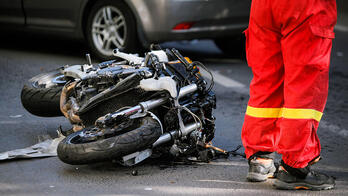 There is a risk every time you're out on the road. Protect yourself from these common motorcycle crashes by being a proactive driver. Left Hand Turns Collisions In these cases, the opposite driver makes a left hand turn at an intersection in front of an oncoming motorcyclist. The driver may not see the biker, or they misjudge the speed and distance at which the biker is coming toward them. Tips:
Head on Collisions A head on collision is one of the most dangerous situations for a biker. Keep an eye on oncoming traffic, especially as it gets dark. Tips:
Lane Changing Collisions The small structure of a motorcycle puts it at a higher risk of not being seen, especially on a highway dominated by semi-trucks. Proactive driving will reduce the risk of being involved in a lane changing collision. If you can't see the mirror or face of the driver, you are in their blind spot. Tips:
Rear End Collisions There are situations when a biker is caught off guard and collides with a vehicle in front of them. Stay vigilant on the road. Traffic conditions can change at any time. Tips:
Be cautious when coming up on a corner. Debris on the road can cause your front tire to slip and lay down your bike. Turns can often be misleading, appearing wider than they really are. Be aware of your skill level and never take on a ride that you don't feel comfortable with. Tips:
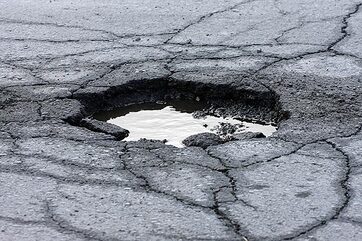 Whether you're a novice or a skilled motorcycle operator, there are going to be times when hazards on the road test your handling abilities. The best defense you have is the ability to react quickly and calmly to the hazards that appear in your path. Use our motorcycle riding safety tips below. Before you go out riding, watch your local weather forecast. If there is a possibility of rain, snow, strong winds or other potentially dangerous weather on the way, you may want to leave your motorcycle parked where it is and choose a more appropriate method of transportation. But you can't always predict the weather, and there is always the possibility you could get caught in dangerous driving conditions. Depending on the specific hazard or road conditions, there are some things you can do - and can practice beforehand - to ensure that you know how to react when these conditions arise. Depending on whether you're riding in slick conditions like rain, snow or wet leaves or trying to avoid hazards in the road such as potholes, debris or uneven pavement, here are a few motorcycle riding safety tips that could help you react in ways that will, keep you and your bike safe. When Surfaces are Slick There are several conditions that could cause a riding surface to become slippery and require you to react quickly. Some of these elements are liquids (such as oil spots) on the road, rain, wet leaves, sand, gravel, and snow and ice. Regardless of the cause of the slippery surface, here are some tips that might help you maneuver through these less-than-ideal conditions:
Strong winds can catch you off-guard and throw you off balance when you're on a motorcycle ride. Opposed to other weather hazards, you can't see it coming. Be aware of weather conditions before you ride and take extra precautions when winds are extreme. Look ahead on the path you're riding and try to determine where the wind is going to catch you so you can plan for it. Some areas to watch out for include bridges, gaps between buildings and trees, open roads, coastal areas and gusts as large trucks pass. Try and figure out which way the wind is going to blow you and then do the following:
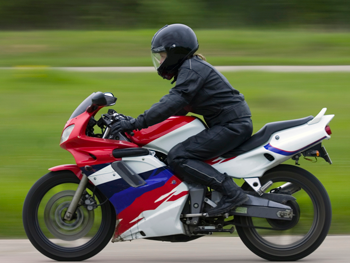 When Debris or Hazards Appear in Your Path There are many times that hazards such as potholes, branches or items in the road might appear seemingly out of nowhere. It is very important that you practice avoiding hazards, and are able to react quickly and calmly when they do appear. Often, you will need to make a quick turn to avoid the object or hazard. To do this, you should lean quickly in the direction you want to turn and press on the inside of the hand grip on the same side. This will cause the front wheel to move slightly in the opposite direction while still allowing the bike to move straight ahead to avoid the object without losing balance or throwing the bike too far off course. If you have to ride over an object, it is important that you:
The same advice holds true when dealing with uneven surfaces like potholes, broken pavement or railroad tracks:
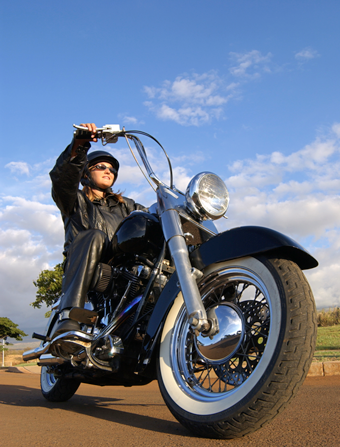 SEE The Motorcycle Safety Foundation has developed this proactive defense-driving tool as an easy way to recall what steps you should take if a hazard crosses your path while you're riding your motorcycle. Keep “SEE” in mind when you're out riding as a good first step in deciding what you need to do. S - Search around you for potential hazards. Look ahead, to the sides, in your mirrors and even over your shoulder. E - Evaluate any possible hazards or dangers such as an oncoming car making a left turn, a driver speeding up behind you or a car waiting to pull onto the road. E - Execute the action needed to avoid the hazard such as braking or turning. If you take the steps to identify and react quickly and calmly to the hazards that you could face on the road, you are in a much better position to come out of a potentially dangerous situation unscathed. Nothing can take the place of practice when you're riding a motorcycle, so it's a good idea to spend some time trying to avoid obstacles or potential hazards in a safe environment. Take a Motorcycle Safety Course to prepare yourself for what you could face. Motorcycle Insurance In addition to doing what you can to protect your motorcycle and yourself from potential hazards out on the road, it's important that you have the right motorcycle insurance. You need an insurance policy that offers the coverages that are important to your specific bike and lifestyle. Take a look at our coverage options on our motorcycle insurance page, or get a quote. Important things to look for when choosing a specialized motorcycle insurance policy:
Source: https://www.foremost.com/learning-center/motorcycle-safety-avoiding-hazards-on-the-road.asp
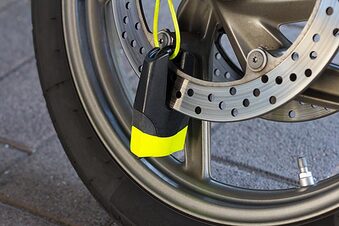 According to National Insurance Crime Bureau statistics, motor vehicle thefts are on the rise, and among the vehicles being targeted are motorcycles. It's one thing to have your property stolen, but if it is something you love and have become attached to, that is a different story altogether. And only 25% to 30% of motorcycles are recovered after theft. Read below to learn how to prevent motorcycle theft. Thieves steal motorcycles to resell the whole bike or to strip it down and sell the parts. The fact that motorcycles are small and relatively easy to move makes them particularly vulnerable to theft. Smart thieves will find a way to steal your bike if they really want it, but there are things you can do to protect your investment and make your motorcycle less appealing to a thief. You can make it bothersome for them to try to steal it. There are several relatively simple and inexpensive ways to help prevent motorcycle theft. One of these methods alone might not be enough to deter a determined thief, but using more than one – or better yet, several – of these methods just might make the difference in whether a thief stops at your house or keeps going. Keep your bike out of sight The best bet is to keep your motorcycle in a locked garage. For some people, this might not be an option. If you have to keep your bike parked outside, start by keeping it in a well-lit area and out of direct view from the street. It should be covered with a plain cover that is free of logos or brand names. If the thief can't tell by the cover what type of motorcycle is underneath, they may be more inclined to pass it over. In addition, you should keep the cover locked to the bike with a cable lock. However, this won't prevent a thief from picking up the whole bike and taking it, cover and all. That's why it is important to use this in conjunction with other security measures. Lock your bike to a stationary object Even if you have your bike in a locked garage when not in use, it is a good idea to also have it locked to something immovable. One method would be to cement a steel eye to the floor to put a chain or cable through. When using a chain or cable lock, be sure to loop it through the frame or another stable part of the bike. When you're out riding and leave your bike parked outside, always use your steering lock – this is your first step of defense. In addition, you should use two or more locks of different types. If possible, park your bike where you can see it and check on it periodically. Make good lock choices When choosing locks, it's not a good idea to spare expense. Choose good locks. Types of locks include serpentine link locks, u-locks and chains. Record key numbers and then file them off the locks if they are stamped on them. Locks attached to your bike should not touch the ground. If a lock is lying on the ground, it is easier for a thief to use a hard item to pound the lock until it breaks. Even if you keep your motorcycle in a locked garage, it's always a good idea to look around to make sure you're not providing a thief with the tools to dismantle your locks. There are usually a lot of tools in a garage and with time and determination, a thief will be able to remove the locks from your bike. Other devices There are several new mechanical devices that can help ensure you'll find your bike where you left it. Many dealers are now selling motorcycles with alarms as a standard feature, as well as similar anti-theft devices. An alarm alone is not an effective deterrent, but in combination with other methods, a wailing alarm is liable to make a thief think twice. Even if your motorcycle isn't equipped with an alarm, you can get stickers that say that there is an alarm installed and put them on your bike. You can also purchase anti-prying devices, pick-resistant mechanisms or you can install one or more kill switches to make the motorcycle impossible to start. Common sense The best way to protect your motorcycle from theft is to use common sense. Don't leave the keys in the ignition or anywhere within close proximity to the bike. Make sure that you choose the safest places possible to park or store your bike. And don't lock your bike down to something that can easily be moved or broken and assume it's still going to be there when you come back. Why have motorcycle insurance? In addition to being confident that you are doing what you can to prevent motorcycle theft, it's important that you have the right insurance. You need a motorcycle insurance policy that offers the coverages that are important to your specific bike and lifestyle. Important things to look for when choosing a specialized motorcycle insurance policy:
Source: https://www.foremost.com/learning-center/protect-your-motorcycle-against-theft.asp
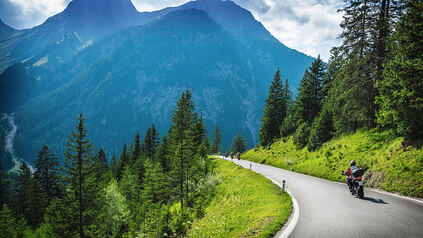 The best part about riding a motorcycle is being up close and personal with the scenery around you. It can be hard to find new places to take your bike and get the most out of every ride. If you are craving a new adventure, look no further! This list of routes highlights some lesser-known areas that are definitely worth a ride. Cherohala Skyway The Tail of the Dragon in North Carolina is a frequent #1 must-ride for bikers all across the U.S. With 318 curves in 11 miles, it is perfect for any thrill seeker. Bordered by the Great Smokey Mountains and Cherokee National Forest, it is breathtakingly beautiful and thrilling. The only downside is that its invigorating charm makes it one of the most crowded rides in the country. Travel 25 minutes southeast and you will find Cherohala Skyway. This 43-mile long ride is less busy, and leads you through the mountains of North Carolina and the forests of Tennessee. The lack of tourists and buildings make Cherohala the perfect place to get away. There is no civilization for about 41 miles, except for a bathroom or two. If you are looking for a smooth ride with no distractions (other than nature’s overwhelming beauty), this is the ride for you. Moonshiner 28 Not too far from Cherohala, Moonshiner 28 offers an entirely different riding experience. The road features good food and plenty of places to stay during your trip. If you are looking for more action during your ride, Moonshiner 28 is for you. This 103-mile ride extends from Deal’s Gap to Walhalla, South Carolina, cutting through Georgia along the way. You will encounter beautiful mountains, crashing waterfalls and several lakes on this spectacular route. You won’t want to miss it! Fun fact: Moonshiner 28 was once home to illegal moonshiners on the run from the law, hence the name. Stop at the (now legal) moonshine distilleries along the way to learn about the area’s rich history! Beartooth Highway Ready to experience the Wild, Wild West? This 68-mile ride follows U.S. Highway 212 through Montana and Wyoming. Featuring dozens of hairpin turns and switchbacks, this dreamy route is perfect for an experienced rider looking for some serious fun. The highway will take you through snow-capped mountains and glacial tundra where you can take a break in the alpine meadows and enjoy the scenery. Due to the high altitude, this route is closed from October to May, making it the perfect summer ride. But be cautious! Beartooth Highway is always subject to extreme weather, even during the summer. Be sure to check in with the Beartooth Ranger District before you head out to ensure that conditions are clear for a safe ride. Peak-to-Peak Highway Colorado is known for stunning scenery and a plethora of mountains. Peak-to-Peak Highway is a 60 mile-long ride that boasts incredible, unobstructed views of the Front Range in Rocky Mountain National Park. Be sure to bring hiking boots and a camera so you are prepared for any adventures! There are endless locations to snap pictures or explore the park with easy pullouts along the way. The ride will take you through Estes Park, which is home to beautiful, clear Lake Estes. Whether you ride past and take in the sights or decide to stop and enjoy the water, the experience is like nothing else. Also, be sure to check out the Continental Divide! This is the location that splits the continent in two with water flowing down both sides of the peak. It is definitely a sight to see. There are bikers that say the best rides to take are the ones that you have never heard of. Traveling away from the beaten path can lead to some pretty incredible moments. Next time you are out on a ride, take a surprise left! Who knows what you might find. Source:https://www.foremost.com/learning-center/motorcycle-routes-must-ride-hidden-gems.asp 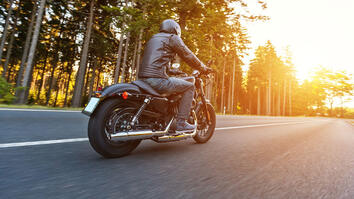 Most bikers hang up their helmets when the temperature drops, but the dedicated crowd rides on. The key, they say, is staying warm and toasty. It’s easier to stay warm while you ride than one might think. The temperature feels colder when you are piercing through the air at high speeds, but heated motorcycle accessories and good old fashioned layering will keep you comfortable during your fall ride. Try these tactics to stay warm this fall!
Now that you know how to stay warm, get the most out of your bike with year-round riding! Just remember to be safe and, most importantly, have fun. Source: https://www.foremost.com/learning-center/stay-warm-while-you-ride.asp
It's 40 degrees outside, the roads are dry, and you've got a couple hours before the big game starts on TV. How about a quick ride? If you've prepped your motorcycle for this kind of opportunity, you're ready to roll. Check out these suggestions for being prepared. Weatherproofing Actually it's as much about keeping the elements at bay as it is being mechanically prepared. Wind is not your friend in cold weather. Protection comes in the form of a large windscreen for as much deflection as possible. You can have all the latest in heated clothing and helmet but it's best to keep that frigid air from hitting your core body mass in the first place. Heated grips are a good idea, too, along with a fairing to keep the wind off your legs. You can even find heated foot pegs to help make sure your boots won't slip at a crucial moment. Mechanical Prep First make sure your tires are in tip-top shape. You need great tread for cold weather, when traction can be even more important than in warmer months. Check for proper inflation. Cold temperatures can affect pressure levels just as heat affects tire pressure in summer. Also look for any cracks in the rubber. Cold temperatures can kill batteries quickly. If yours has seen more years of service than you can remember, it could be vulnerable during winter riding. Think about getting a new one. At the very least, check the battery's fluid level and top it off, if necessary. Double-check all battery and ignition connections to avoid corrosion from extra moisture in winter. Change your coolant if you have a water-cooled bike. And bump up its cold weather rating! Riding Style Winter is a time to ride more conservatively than usual. You may find more hazards than you're used to seeing in the warmer months. You can experience reduced visibility and cars can have more trouble seeing you, too and stopping in time to prevent a crash. Be extra careful if you run across salt, sand or other road treatments that can make it difficult for your tires to maintain traction. And, if it starts to snow or you encounter icy pavement, do the smart thing. Head for home and wait for a warmer day. https://www.foremost.com/learning-center/prep-your-bike-for-winter-riding.asp
If you live in a climate where the temperature starts dropping in October and there's a chance of snow from November through February, you'll most likely be thinking about putting your motorcycle away for the winter. Your motorcycle is an investment of your finances and your time, and it's important to think about keeping it clean and safe while the weather is cold and snowy. Wherever you may choose to keep it for the winter season, remember these tips from the Foremost Insurance Group and the American Motorcyclist Association: Clean it up Give your bike a good wash and wax and cover it with a breathable cloth cover. This will keep dirt and dust, or other airborne matter in your garage, from settling on your bike. Gas it up Top off your tank and add the recommended amount of fuel stabilizer. Stabilizer prevents your fuel from breaking down and producing a brown residue that can coat your carburetor. Run your engine for a few minutes to circulate the treated gas. Since gas is flammable, do not store a motorcycle with a full tank of gas in an area where there is open flame, pilot lights, sparks or motors. Change the oil Just before you put your motorcycle into storage, change the oil. Used oil that sits in your bike all winter becomes corrosive and can damage your motorcycle's parts. Check the coolant Since motorcycles are not used in freezing temperatures, many riders overlook the use of coolant. Use a floating-ball device to check if your coolant level is sufficient to resist freezing. If it's low, always add according to the manufacturer's directions. Charge the battery Remove your battery, store it at a temperature above 32 degrees and trickle-charge it once a month. If you're able to run the bike once a month, leave the battery in the bike and disconnect the negative cable end. Remember the tires If you can manage it, store your bike with the motorcycle off the ground. If you can't do this, make sure the tires are properly inflated, set the bike on its stand and rotate the front tire every so often to avoid flat spots. By taking the time to properly prepare your motorcycle for storage, you'll save more time in the spring when you want to take your motorcycle out on the open road. Motorcycle insurance It's important that you have the right motorcycle insurance. You need an insurance policy that offers the coverages that are important to your specific bike and lifestyle. Take a look at our coverage options on our motorcycle insurance page, or get a quote. Important things to look for when choosing a specialized motorcycle insurance policy:
Source: https://www.foremost.com/learning-center/store-your-motorcycle-safely.asp
You've stored your bike all winter long safely, protecting your investment from the harsh temperatures. Follow these helpful motorcycle safety tips from the Foremost Insurance Group and the American Motorcyclist Association to make your first trip worry-free.
Get a service check It's a good idea to have your bike serviced prior to taking it out for the first ride. Since you've already changed the oil and trickle-charged the battery prior to and during storage you should be in good shape. Have these items, the tires and the coolant checked (if your bike is liquid-cooled) during the service appointment. Carry a tool kit Flat tires can cut a ride short. The best way to prepare yourself is to carry tools to temporarily repair a flat and know how to use them. You should always carry a pressure gauge and use it often to help avoid flats. However, accidents do happen. Always carry a tire repair kit and know how to plug the damage and inflate the tire by means of CO2 cartridges, or by using a pump, so you can get to a garage and have the tire replaced. Practice on an old tire. It's also a good idea to carry a flashlight and a spare fuse. You can't plan when your bike will get a flat or breakdown, so have the tools you need to make minor repairs to get you back on the road. If you're going on a longer trip it's also a good idea to carry a spare electrical relay, fuel filter (if these apply to your bike), headlight bulbs or other similar items that can malfunction. Always carry a cell phone especially if you're riding solo. Wear the proper gear for your comfort Your body is exposed to the elements when you ride so protect yourself from temperature and moisture changes. Even a short trip can take you through a variety of temperatures. Carrying an extra pair of dry gloves can make a world of difference. Also consider wearing jackets with venting and removable linings, and layer your clothing so you can add or remove depending on the temperature. In warmer weather bring along a rain suit. The goal is to stay warm and dry. Enjoy the ride Take precautions and pack smartly and you'll make great memories. Create a list of things you'll need before you start out, and then add or remove items depending on your experience and your bike. Motorcycle Insurance Another important motorcycle safety tip is to make sure you have the right motorcycle insurance coverage. Take a look at our coverage options on our motorcycle insurance page, or get a quote. Source: https://www.foremost.com/learning-center/get-your-motorcycle-out-of-storage.asp |
Categories
All
Archives
May 2024
|
Social MediaContact UsNavigation |
|
Website by InsuranceSplash
Privacy Policy | Terms of Use
© 2025 by HARRIS, REED & SEIFERTH INSURANCE GROUP, INC. All rights reserved.
© 2025 by HARRIS, REED & SEIFERTH INSURANCE GROUP, INC. All rights reserved.

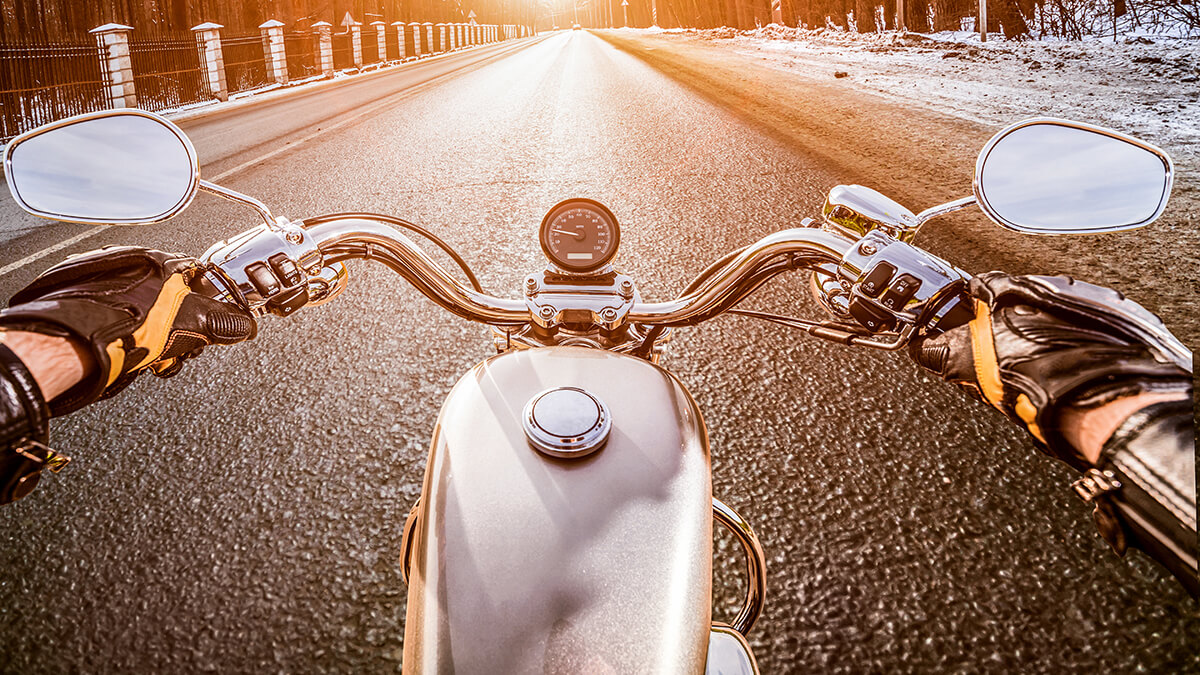
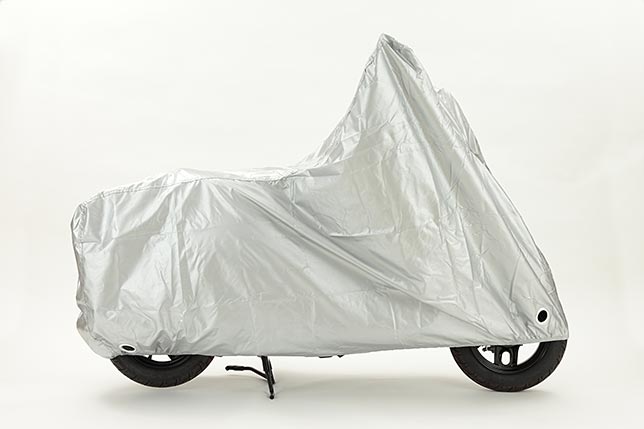
 RSS Feed
RSS Feed